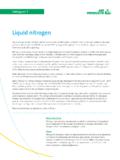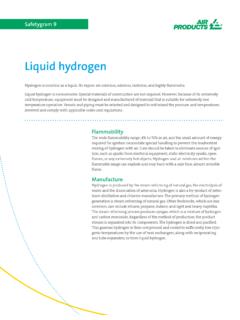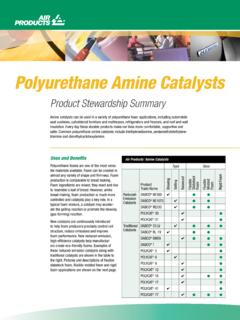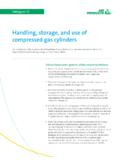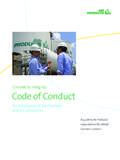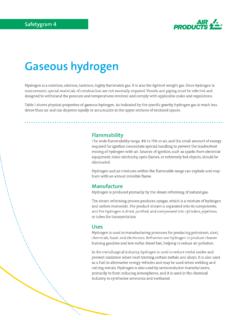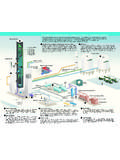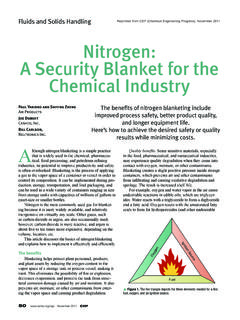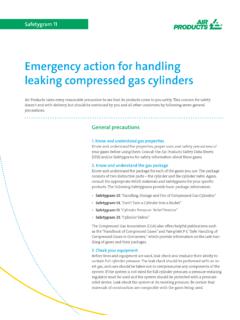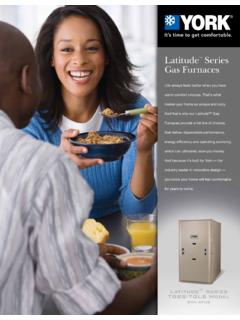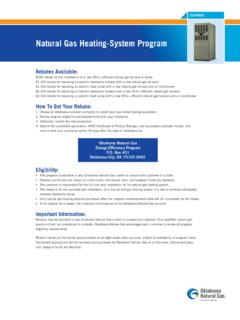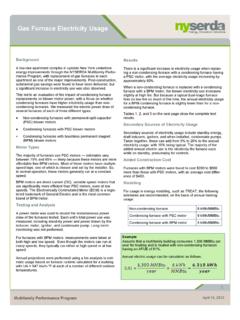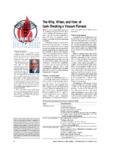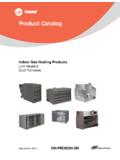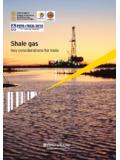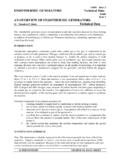Transcription of Introduction to Furnace Brazing - Air Products & Chemicals
1 Introduction to Furnace BrazingWhile every effort was made to ensure accuracy in the preparation of this publication, the material used to compile the information presented was derived from many different sources and intended to serve only as a general guide, and not as a handbook for specific applications. As such, Air Products and the members of its Editorial Review Board assume no responsibility for technical accuracy or omissions due to editing or printing Products Editorial Review BoardDr. Diran ApelianExecutive Director, CHTEMPIB ruce Boardman, FASMF ounding Member, CHTED eere & Fabian, FASMP resident, ASM Heat Treating SocietyBodycote-LindbergDan HerringDirector of TechnologyIpsen International, Nayar, FASMP residentTAT TechnologiesRobert PeasleeVice PresidentWall Colmonoy of ContentsIntroduction to Furnace Brazing ..7 Definition of Brazing ..7 History of Brazing ..7 Differences between soldering, welding, and Brazing .
2 7 Flame Brazing vs. Furnace Brazing ..8 Furnace configurations ..9A Look at Common Furnace Brazements ..11 Base metals ..11 Typical brazement parts/assemblies ..11 Joint design and preparation ..13 Types of joints ..13 Selecting a base metal ..14 Selecting a filler metal ..17 Pre-assembly and fixturing ..17 Wettability ..18 Considerations for Furnace Brazing ..19 Physical ..19 Metallurgical ..19 Furnace equipment ..20 Safety/environmental ..21 Furnace Brazing Technologies ..22 Controlled-atmosphere processing ..22 Vacuum Furnace Brazing ..29 Other Brazing technologies ..30 Troubleshooting ..31 Potential metallurgical problems ..31 Atmosphere-related problems ..33 Summary ..35 Glossary ..36 Bibliography ..391 Introduction to Furnace brazingWhat is Brazing ?The term Brazing can be applied to any process which joins metals (of the same or dissimilar composition) through the use of heat and a filler metal with a melting temperature above 840 F (450 C), but below the melting point of the metals being joined.
3 In Furnace Brazing , temperatures of 2050 to 2100 F (1120 to 1150 C) and above are not uncommon, especially when Brazing stainless steels with nickel-based filler metals or carbon steel with copper filler metal. Other very high temperature Brazing applications include molybdenum with pure nickel as the filler metal and cobalt with a cobalt alloy filler successfully brazed joint often results in a metallurgical bond that is generally as strong or stronger than the base metals being joined. Modern Brazing technology has extended the definition to include the bonding of metal to non-metallic substrates, including glass and refractory materials. However, this publication is limited to Brazing of metals only, and, specifically, Furnace Brazing of courtesy of Handy & HarmanFigure 1: Eyeglass frames showing sequence of Brazing operationsHow does Brazing join materials?In Furnace Brazing , the parts or assemblies being joined are heated to the melting point of the filler metal being used.
4 This allows the molten filler metal to flow via capillary action into the close fitting surfaces of the joint and to form an alloy of the materials at the transition point upon solidification. The base metals do not melt, but they can alloy with the molten filler metal by diffusion to form a metallurgical the metallurgical properties at the brazed joint may differ from those of the base metals, the selection of the appropriate filler metal is critical. Depending on the desired properties of the application, the Brazing operation can be used to impart a leak tight seal and/or structural strength, with excellent appearance characteristics, in addition to joining for the purpose of extending section length, , in piping or tubing history of brazingBrazing is the oldest method for joining metals, other than by mechanical means. Initially, the process was most popular for joining gold and silver base metals. Lead and tin, as well as alloys of gold-copper and silver-copper, were used as filler metals because of their low melting points.
5 Copper hydrates and organic gums were added later because of their reducing action, which helped to minimize oxidation and improve the cosmetic appearance of the joint. Metallic salts were also , alloys of brass and copper were introduced as filler metals because of their ability to produce higher-strength joints in copper and steel structures, which were also able to withstand high temperatures. As Brazing technology advanced, many other filler metals have between soldering, welding, and brazingThe joining techniques of soldering, welding, and Brazing have many similarities; however, each process has its own characteristics and specific indications for use. Generally, the criteria for selecting one process over the other depend on the physical and economic requirements of the base metals and/or end-use of the assembly being with Brazing , soldering does not involve the melting of the base metals. However, the filler metal used has a lower melting point (often referred to as liquidus ) than that of Brazing filler metals (below approximately 840 F, or 450 C) and chemical fluxes must be used to facilitate soldering operations, heat may be applied in a number of ways, including the use of soldering irons, torches, ultrasonic welding equipment, resistance welding apparatus, infrared heaters, or specialized ovens.
6 A major advantage of soldering is its low-temperature characteristic which minimizes distortion of the base metals, and makes it the preferred joining method for materials that cannot tolerate Brazing or welding temperatures. However, soldered joints must not be subjected to high stresses, as soldering results in a relatively weak , on the other hand, forms a metallurgical joint in much the same way as Brazing . Welding filler metals flow at generally higher temperatures than Brazing filler metals, but at or just below the melting point of the base metals being are often employed to protect and assist in wetting of the base-metal surfaces. Heating sources include plasma, electron beam, tungsten and submerged arc methods, as well as resistance welding and, more recently, laser-based equipment and even explosive disadvantage of welding is its requirement for higher temperatures, which melts the base metal at the joint area and can result in distortion and warpage of temperature-sensitive base metals and stress-induced weakness around the weldment area.
7 It is generally used for joining thick sections where high strength is required and small areas of large assemblies (spot welding) where a degree of base-metal distortion is acceptable. Welding can also cause adverse changes in the mechanical and metallurgical properties in the base metals Heat Affected Zone (HAZ), requiring further corrective heat Brazing operations, heat is generally supplied by an oxyfuel-type torch (manual or automated), a controlled-atmosphere or vacuum Furnace , a chemical dip (salt bath), or specialized equipment using resistance, induction, or even infrared technologies. Brazing is especially well suited to high volumeproduction (automation) and for joining thin sections and parts with complex Brazing , as opposed to flame Brazing in air, does not generally require a chemical flux, which gives it a distinct advantage over welding and soldering by reducing or eliminating the need for cleaning the parts of flux filler metals flow at relatively low temperatures and, thus, may be used with many popular metals with minimal thermally-induced distortion of the brazed parts.
8 Furnace Brazing is sometimes problematic for very large assemblies because of the size of the assembly relative to the Brazing Furnace and the practicality and desirability of heating the entire assembly to Brazing temperatures. At Brazing temperatures, the metallurgical properties of some temperature-sensitive base metals could be compromised. However, Furnace Brazing is ideal for joining complex advantages of Brazing include the ability to: Join dissimilar metals, porous metals, powdered metals, and cast materials to wrought metals, as well as non-metals to metals Join metals of varying section thickness Maintain metallurgical properties of base metals Join fiber- and dispersion- strengthened compounds Work with extremely close production tolerances Provide reproducible results reliably, compatible with accepted quality control techniques Obtain good results with minimal operator training and less expensive equipment (than welding)3 Brazing as a joining technique has only a few disadvantages.
9 As mentioned previously, it may not be suitable for extremely large assemblies. Also, metallurgical concerns may dictate using an alternate joining method. It must be remembered that the physical and chemical properties of a brazed jointcan differ from that of the base and filler metals at the joint transition, which is heterogeneous as a result of the molecular nature of the bond. Also, stresses caused by external loads are nonuniformly distributed. These concerns are especially important when Brazing cold-worked or hardenable 1 compares the properties of soldered, welded, and brazed 1: Differences between soldered, welded, and brazed jointsJoining Method Joint Strength Distortion AestheticsSoldering Poor None GoodWelding Excellent Likely FairBrazing Excellent Minimal ExcellentFlame Brazing vs . Furnace brazingFlame Brazing is a process wherein the heat required to melt and flow the filler metal is applied locally to the joint area and is furnished by a fuel gas flame, usually consisting of natural gas, acetylene, hydrogen, or propane combusted with air or oxygen (oxyfuel).
10 The equipment used is similar to that employed in gas torch welding. Flame Brazing requires a chemical flux to minimize oxidation that would interfere with the integrity of the bond and to aid in the filler metal flow (wettability). Use of a chemical flux necessitates post braze cleaning, which is a secondary operation not generally required of Furnace a simple process standpoint, the two Brazing methods are identical: two base metal parts are brought into close contact with one another in a conventional joint configuration, , butt or lap. A suitable filler metal is placed along the seam or fed into the joint along with a flux. The whole assembly with the filler metal is then heated to a temperature that allows the filler metal to liquefy and fill the joint gap via capillary action. Heat is removed and the assembly is then cooled or allowed to cool to ambient temperature before further Brazing , however, offers distinct advantages over flame Brazing , especially in the areas of control, automation, repeatability, and flexibility.
